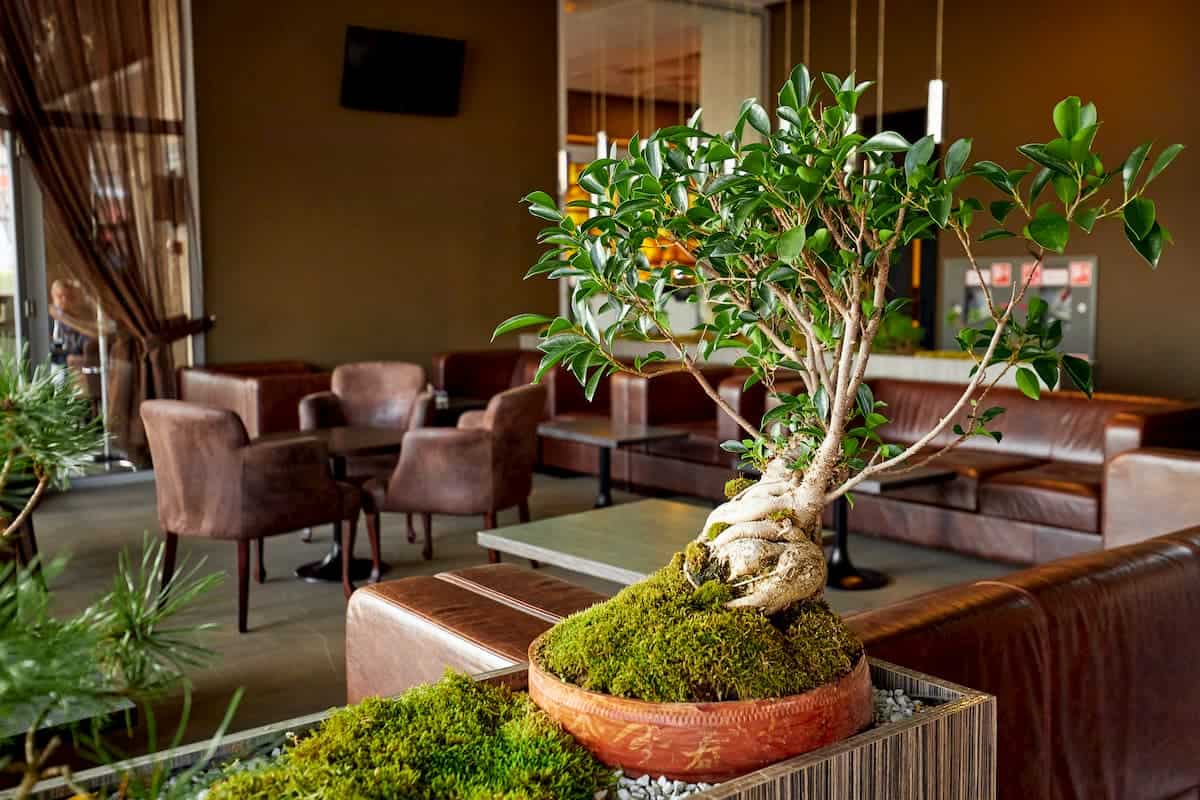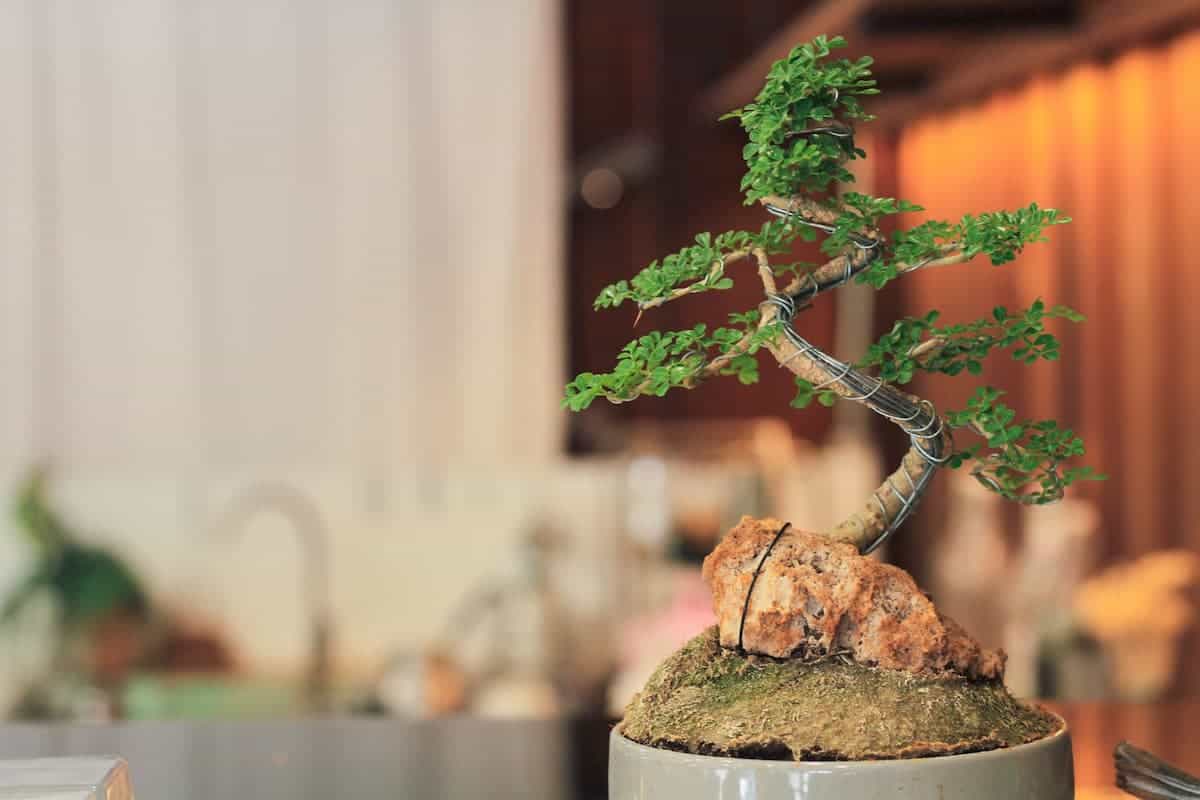Bonsai is a Japanese word that translates to “tray planting.” Bonsai is an ancient Japanese technique of plating and cultivating trees in a container that mimics the shape, scale, and texture of full-sized trees.
When we refer to bonsai in English, we intend it as an umbrella term to describe all types of plants that are plotted and cultivated and adhere to Japanese techniques and traditions.
Bonsai trees are planted primarily for aesthetic reasons as opposed to medical reasons or for food. So then why do bonsai trees grow so slowly?
The reason why bonsai trees go slowly is that they are grown in a container or pot. All plants gain nutrition from the soil using their roots so they can grow bigger, but in the case of bonsai plants, the roots are blocked by the container, and there is not enough room for the plant to grow bigger.
It takes effort and viable techniques to cultivate a plant in a container that can mimic full-sized trees. The techniques involved numerous and have continued to evolve using modern methods as well as arcane.
That’s why bonsai takes a long time to grow as compared to normal trees. Bonsai trees are just normal trees, but the size of the container limits their growth, and they are pruned regularly. All these techniques are applied so the tree can be arranged aesthetically.
Bonsai trees can grow like normal trees if allowed to. However, bonsai techniques are focused on training the tree to remain small and imitate a full-sized tree’s texture and shape.
Keeping the tree in shape involves careful use of techniques and requires an understanding of the roots’ manipulation.
History of Bonsai Techniques! An Overview!
The roots of the Japanese art of bonsai emerge from the Chinese practice of Penjing. History says that from the 6th century onward, Buddhist monks and personnel from the Japanese Imperial embassy visited mainland China.
Upon their return from mainland China, they brought many Chinese goods and ideas, including Chinese container plantings. With time these container plantings began to become a part of Japanese culture and were integrated into Japanese traditions.
In Japan, these trees have always continued to show up in scrolls and various paintings. For example, bonsai was portrayed in the 1299 AD scroll Ippen Shonen Eden. Along with this, potted plants also show up in other scrolls such as the Kasuga-Gongen-Genki scroll from 1309.
Another aspect that contributes to the Bonsai trees’ prestige and aesthetic value is the relationship between Zen Buddhism and plotted trees.
These Zen Buddhist monks were also responsible for introducing various arts, including Bonsai, to the political leaders.

Bonsai in Modern Times
In 1914, the first national annual bonsai show was held in Tokyo’s Hibiya Park. After that, a public exhibition of bonsai trees began in 1927 at the Asahi Newspaper Hall in Tokyo.
Following this exhibition and the events following World War II, the Japanese traditions of bonsai became highly accessible to the Western world.
These trends also allowed an increase in the scope and number of bonsai exhibitions, which attracted Western and international audiences’ attention. Bonsai exhibitions and displays continue to happen to this day.
Initially, the international audience was unaware of the bonsai techniques, but with time, the international audience also began to learn about the bonsai techniques as the planting components for bonsai, such as soil, stock, and tools, became accessible.
Aesthetic Appeal of Bonsai Trees
Bonsai trees are characterized by and known for the aesthetic value they hold concerning the Japanese tradition and values. Bonsai trees are artistically shaped miniature trees in a container with an aesthetic goal in mind.
Another aesthetic appeal of the bonsai trees is their connection with Zen Buddhism and the expression of Wabi-Sabi. Following the tradition of Japan, many cultures have incorporated the prestige and aesthetic importance in their traditions.
Behind Bonsai trees, there are years of encoded practices and laws which govern the tradition of bonsai techniques, just like there are rules behind paintings, music, and other forms of art. The key principles behind the aesthetic of Bonsai trees include.
Miniaturization
This should be obvious by now that a traditional Japanese bonsai tree is supposed to be dwarf compared to full-sized trees. By applying careful techniques and utilizing a good container, the plant is kept small enough for the bonsai standard.
Asymmetry
The traditional bonsai principles dictate that the root and leaves placement should not be symmetrical whether the symmetry is bilateral or radial. The use of symmetrical shapes is widely discouraged by the encoding rules.
Removal of Artistic Traces
The aesthetic tradition of the bonsai technique recommends the artists to remove all of his traces. Removal of traces refers to the removal of wiring, which the artists use to keep the plant in shape, and the concealing of occasional cuts, which can result from cutting of stems of the plant.
Balanced Proportions
The bonsai plant’s goal is to mimic the shape, scale, and texture of a full-sized plant. Therefore, the proportions need to be as appropriate and realistic as possible. For example; A small tree with large leaves is an inappropriate proportion and needs to be discouraged.

Popular Bonsai Styles
The Japanese tradition of Bonsai includes many styles, and they are not mutually exclusive; rather, a single tree can exhibit multiple styles at the same time. Let’s look at some of these Bonsai styles.
Formal Upright
This style of bonsai is also known as Chokkan. A straight and upright trunk characterizes this style. The branches of the plant are thick at the bottom and thin at the top.
Informal Upright
This style of bonsai is also known as Moyogi. Aesthetically curved trunks and branches characterize this style. The apex of the plant is located above the trunk’s entry into the potting soil.
Slant
The style of bonsai is also known as Shakan. This style, just like the formal upright style, is also known for its use of a straight and upright trunk.
But the slant style trunk emerges from the potting soil at an angle, and the apex is either located left or right of the root base.
Now let’s look at some viable steps to grow your Bonsai tree.

A Basic Guide to Growing Your Bonsai Tree
Growing your bonsai tree is hard, but at the same time very rewarding. Obtaining a seed should not be hard. You might not even need to buy seeds; you can collect seeds from surrounding trees.
There is no such thing as “bonsai trees” because normal trees can be made bonsai. An important thing to keep in mind is to ensure that you follow the growing season of those seeds by a process known as stratification.
Stratification
Most seeds from trees germinate in spring reason. The seeds can survive through the winter season and germinate when they get the stimulus.
To maximize those seeds’ growth rate, they require the cold season; many of those seeds do not grow up without first passing through a cold season.
If you want to maximize your seeds’ growth rate, you probably should mimic the cold season by storing the seeds in a cold spot for a few weeks so they can receive the stimulus. For healthy growth, first, soak those seeds in water before putting them in the cold spot.
If you are sowing your seeds in the autumn season, you will not need to go for stratification. Growing the seeds in autumn is a much more natural way to grow the plants.
Growing the Seed
Here’s a step-by-step guide to growing the seed:
- Apply a layer of coarse, water draining substrate, such as grits.
- Apply a layer of bonsai soil.
- Place seeds on the soil.
- Cover it with another layer of bonsai soil.
- Compact the soil by using your fingers.
- Water thoroughly; keep the pot a bit moist.
Styling and Shaping of Bonsai Trees
Bonsai trees are special neither are they genetically modified to dwarf the plants. Bonsai trees are normal plants that are styled and shaped using various techniques that add to their aesthetic appeal. Let’s discuss some techniques.
Pruning
One of the essential techniques to keep in mind is to prune the plant regularly. The pruning is a practice that involves cutting or removal of some parts of the plant, such as branches, buds, or roots.
There are two kinds of pruning, i.e., maintenance and structural. To maintain the shape, simply cut the plant into a canopy shape. For structural pruning, remove all the branches which do not fit the desired shape and remove them.
Wiring
Wiring is used to bend the plant into the desired shape. Use aluminum wires, choose the branches which you want to reshape, and bind the wires around them. Cut the excess part of the wire to use it to wire a different branch.
Final Thoughts on Why Do Bonsai Trees Grow so Slow
While it may seem like they are dwarf plants the actual issues that help to ensure a small plant is down to a limited growth area for the root system.
This doesn’t limit the lifetime of the tree and many are shown to last through generations of family allowing a passing of history and a view of more long term life then our typical shorter views.
I suggest those looking for a semi-passive way to start into gardening take the chance on a bonsai tree and you will love the chance to enjoy their growth over time!






